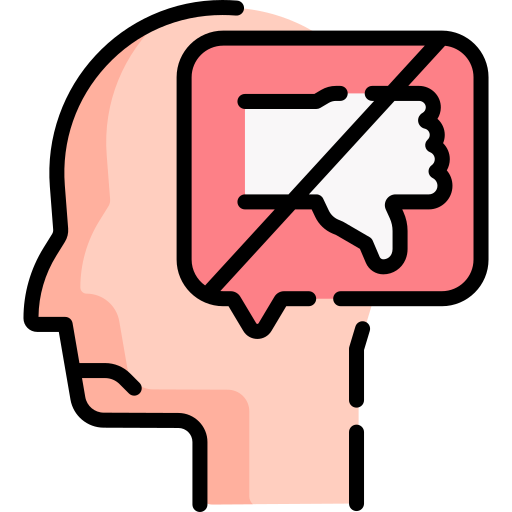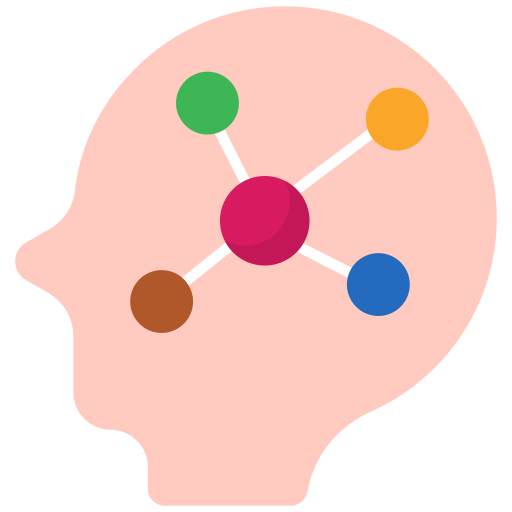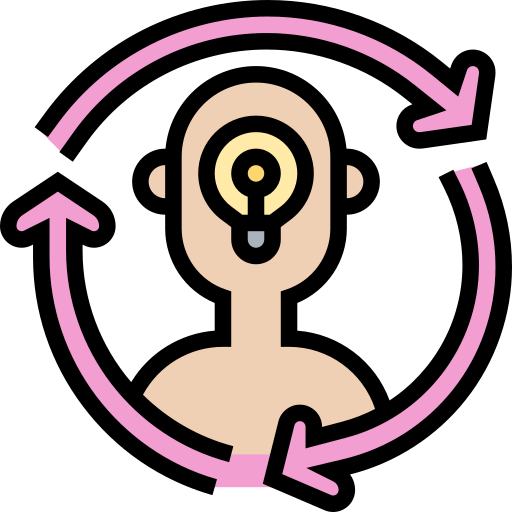 Photo by ThisisEngineering on Unsplash
Photo by ThisisEngineering on UnsplashMeet Grace.
She prepared a presentation at work and aced it! She received lots of praise, but she couldn’t help but fixate on one small comment:
You could be clearer in some steps next time.
Suddenly, all the positive feedback became overshadowed by that comment.
Just like Grace, many of us get caught in this pattern of focusing too much on the negative.
 Learn to recognize and reframe mental filtering into a more positive and healthy perspective.
Learn to recognize and reframe mental filtering into a more positive and healthy perspective.
What is Mental Filtering?
Mental filtering is a common cognitive distortion where a person focuses on the negative aspects of an experience while ignoring the positives.
Signs of mental filtering:
 Infographic reflection sheet courtesy of Simple Psychology. To hear an audio version of the information in the image above, click the play button on the audio player below:
Infographic reflection sheet courtesy of Simple Psychology. To hear an audio version of the information in the image above, click the play button on the audio player below:
Why does it happen?
Our thoughts and perceptions shape our reality. Holding negative thoughts distorts your perception, even filtering out positive events to seem negative.

What are the consequences?
Mental filtering can lead to ruminative thinking — the process of negative thought patterns that keep coming up in someone's mind.

It can then become self-reinforcing, making negative beliefs stronger. This is a response to the painful emotions or anxieties about a certain situation.

It can be catastrophizing, making you believe that "you’re in a worse situation than you really are." It makes any circumstance more challenging for your well-being and affects your confidence, motivation, relationships, and decision-making.
 There are steps you can take to combat mental filtering! 👊
There are steps you can take to combat mental filtering! 👊
1. Recognize Automatic Negative Thinking
Paying attention to how you frame things to yourself can be the hardest part — sometimes it feels automatic.
Automatic negative thinking (ANT) means thoughts that happen spontaneously in response to everyday events. These thoughts often reflect the negative beliefs someone has about themselves.
By externalizing these thoughts, you can step back, see them more clearly, and respond with more compassion.
Ask yourself:
What does it look and sound like when I engage in mental filtering?
According to Mind Over Mood, a cognitive behavioural therapy (CBT) workbook, you can break down a scenario into three parts:
Situation
Create a thought record. Ask yourself: who, what, where, and when. This helps stick to facts instead of feelings.
For example: In a work meeting (where), the department head (who) suddenly asked you (what) to present mid-meeting (when).
Mood
Describe how you feel in one word and rate the intensity out of 100. This can help you understand which thoughts were influenced by certain types of moods.
For example: I felt nervous (70%), and embarrassed (30%).
Immediate Thoughts
Pay attention to the automatic thought you had when it happened.
For example: "I'm going to mess this up." Evaluate why the situation is causing you to think that way. Think: "What evidence supports this thought?"
It's important to externalize automatic negative thoughts and recognize them as patterns rather than personal truths. This will reduce the cycle of ruminative thinking.
Quiz
You ace a midterm but get one answer wrong. Later, you think, "I'm bad at this subject." Which step would most help you combat mental filtering?
2. Reframe Your Negative Thoughts
Once you recognize, label, and gather evidence about the situation, reframe the thought! Explore alternative explanations:

Personal perspective: Instead of, "I'm going to mess this up", try: "I can handle it, and still try my best." You still maintain a positive outlook while remaining realistic.
Another person's perspective: You could view it from your friend or colleague's perspective. They'd likely be expecting you to try your best and not judge you harshly for feeling nervous.
3. Practice Mindfulness
Mindfulness strengthens your ability to observe thoughts without reacting to them.
 It helps create awareness of your thinking, so you can recognize when a negative thought arises. Use these techniques:
It helps create awareness of your thinking, so you can recognize when a negative thought arises. Use these techniques:
Mindful Breathing
A few minutes of mindful breathing daily can help slow down this cycle and stay present. It could be brief moments of gratitude or faith!

Gratitude or Thought Journal
Journaling is a great way to manage your emotions and boost your well-being.

Thought journal: helps identify, track, and explore your emotions. Find a journal prompt that focuses on the situation and evaluate how it made you feel — for example, “What mistakes did I focus on in this feedback?”
Gratitude journal: helps train your brain to notice the positive. Write down three things you’re grateful for each day — for example, things as simple as “the birds chirping”.
If mental filtering affects your daily functioning or mood, professional help is always there to guide you. Other available resources, such as apps, are present to support you, too!
Helpful Apps
MindShift is designed to manage anxiety by challenging negative thoughts with effective coping mechanisms.
Calm provides guided breathing programs, sleep stories, relaxing music, and meditation.
Happify uses game-based approaches and activities based on CBT to help users overcome negative thought patterns.
Take Action

Combating mental filtering requires recognizing harmful thinking patterns and actively reframing your thoughts. Learn more about mental filtering in these Bytes:
Your feedback matters to us.
This Byte helped me better understand the topic.



